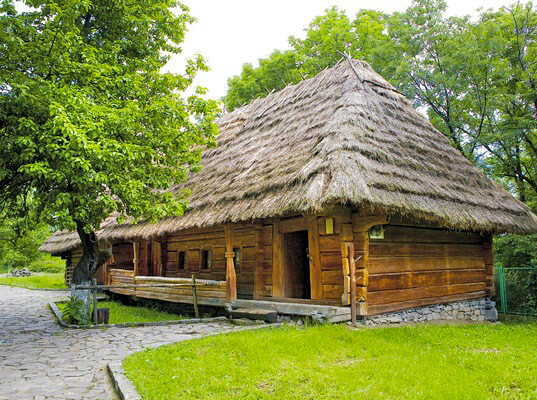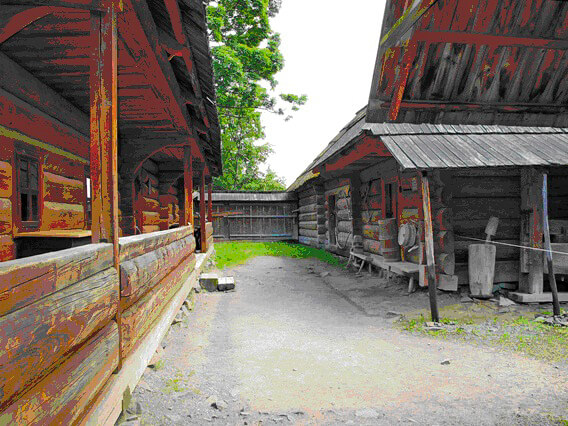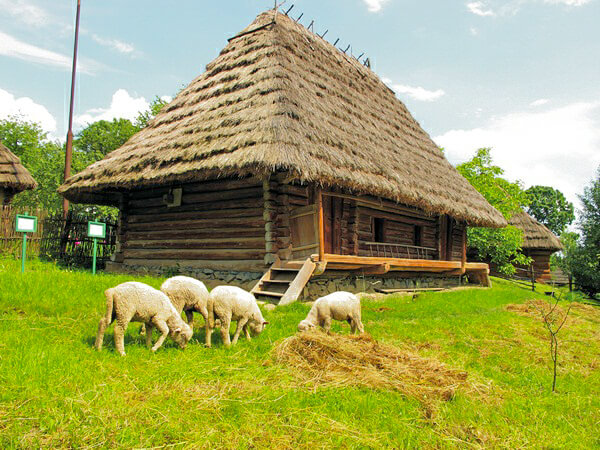House construction the construction of commercial buildings was an important event, if only because it required significant funds and assistance from relatives and neighbors. The initial and responsible stage was the choice of a”good place”. Along with the centuries-old folk experience, which dictated where it is better, depending on the nature of the area, to build residential building, there were beliefs that preserved traces of pre-Christian beliefs.
First we looked for the so-called ” clean” a place that hasn’t been desecrated yet. An unkind (impure) place was considered, first of all, the limit, there is a place that does not belong to anyone. This place serves as a road for the devil and the unclean spirits. Someone would have died in that place. This was considered an unkind place, on which the “devil” fell, that is, the star that sinned. It was impossible to build in the immediate vicinity close to the fork, because this is the place for bosorkani-witches (“vitornici”), and at the place where someone was killed.
In the village Likitsary the house was not built on “graves” – place where there were heaps of stones, because such places were often infested snake.

Lemke never built a house on the site of graves, as well as in those places where water was poured out after washing the dead. It was believed that if you build house in such a place, you will dream of the dead, and the inhabitants of the house prematurely die.
The lemks also had a custom of not cutting down trees at the site of the house construction, as they believed it could bring terrible misery.
When choosing a place to build a house, we always took into account natural-climatic the conditions of the terrain. In mountains housing was built on high slopes, where in comparison with depressions and mountain gorges, the microclimate is more favorable. Sharp changes in night and day temperatures in hollows and gorges adversely affect human activity and the cultivation of even a limited number of crops.
The house was always set up to leeward, behind a hill or wood. Did not build housing on the mountain passes, given the constant flow of large air masses through them, which was accompanied by strong winds.
У Carpathian,according to the generally accepted tradition, the huts were placed with their Windows facing South or, depending on the area, South – East or West, at a proper height, so that during floods, which were quite frequent here, the water did not flood the houses.
The common belief was rational, that a new house can’t be built on a log of trees (“on stumps”).
In In the bereznyansky district (S. Lyutaya) on the site chosen for the construction of the house, ash was poured into the corners at night and pieces of bread were put. In the morning, we checked: if the bread is round, we can build it, if not, we chose another place. On Hutsul region cut the bread into four pieces, put them in the corners of the future house, and in the morning looked: if the bread is in place, then you can build.
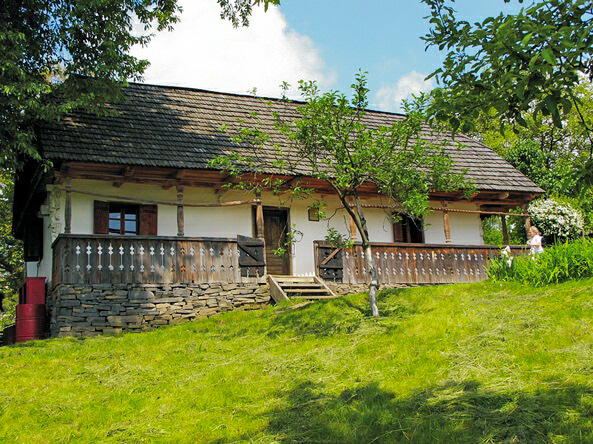
The “impure” place was distinguished from the pure also as follows: at night, the “fortune teller” went to the chosen place completely naked, considered through a sieve, and uttered various spells.
The peasants believed that in a house built in an “unclean” place, there will be no happy and joyful life. In such a place will be cattle will die, and family members will get sick with various mysterious diseases or prematurely they will die. Housing built in an “unclean” place is haunted by fires, floods, earthquakes, landslides and so on, there is “evil spirits” in it, torments the inhabitants, appears to them in different likenesses, etc.
When the selected location under the “tent” or “Halal” (the so-called future house), the master (“Stelmakh” — the Hutsuls), made a cross with small spruce, which left only one upper crown twigs – “tip”. Below this crown, a hole was made in the trunk of a tree and a cross – shaped stick was laid through it in a horizontal position. This cross the master wrapped it in wool, soaked it in potions, fumigated it with incense, sprinkled it with Holy water, and buried it in the middle of the place where the house should have stood.
Be built on a relatively horizontal downtown comfort in the woods near a brook or rill — “for fun, happy place”, and so is the place where the cattle willingly rests where there are anthills (the”marasquin”), where I like to jump on the grass and birds. In the middle of the selected area put a “flower” – a small smerichku, cleared from branches and “zatsvetshuyu” from above colored wool, colorful ribbons, papers and flowers. A fire was lit in the center of the log cabin, which was supposed to burn until the building was completed.

When laying a new house always took taking into account the placement of the old one, because it was the place of the previous hut that was considered optimal, because it was tested by the life of the ancestors.
The Carpathians were settled in the XIV-XVI centuries by peasants who fled from feudal oppression, so the tradition of building a house away from the road was understandable. According to this tradition, based on practical experience, and there was a custom – do not put the house on the path (“path”), on the path, limits, because there, allegedly, went once “dashing”, who could come to a new house and bring misfortune. Beliefs associated with construction there were many new homes in the Carpathians, as well as many magical actions timed to this event, although today not all of them can be explained, not all of them can be traced to the rational basis on which most of them arose.
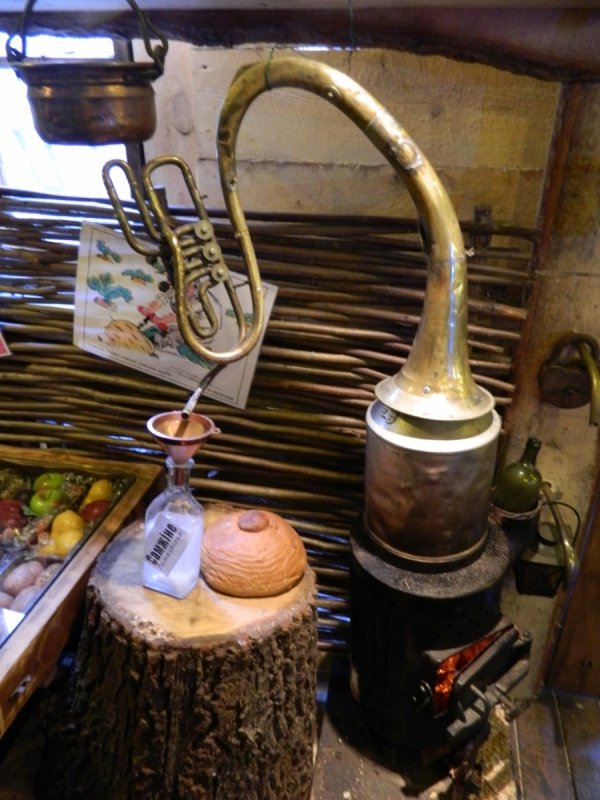
Transcarpathian hut The yard in Transcarpathia Transcarpathian hut



